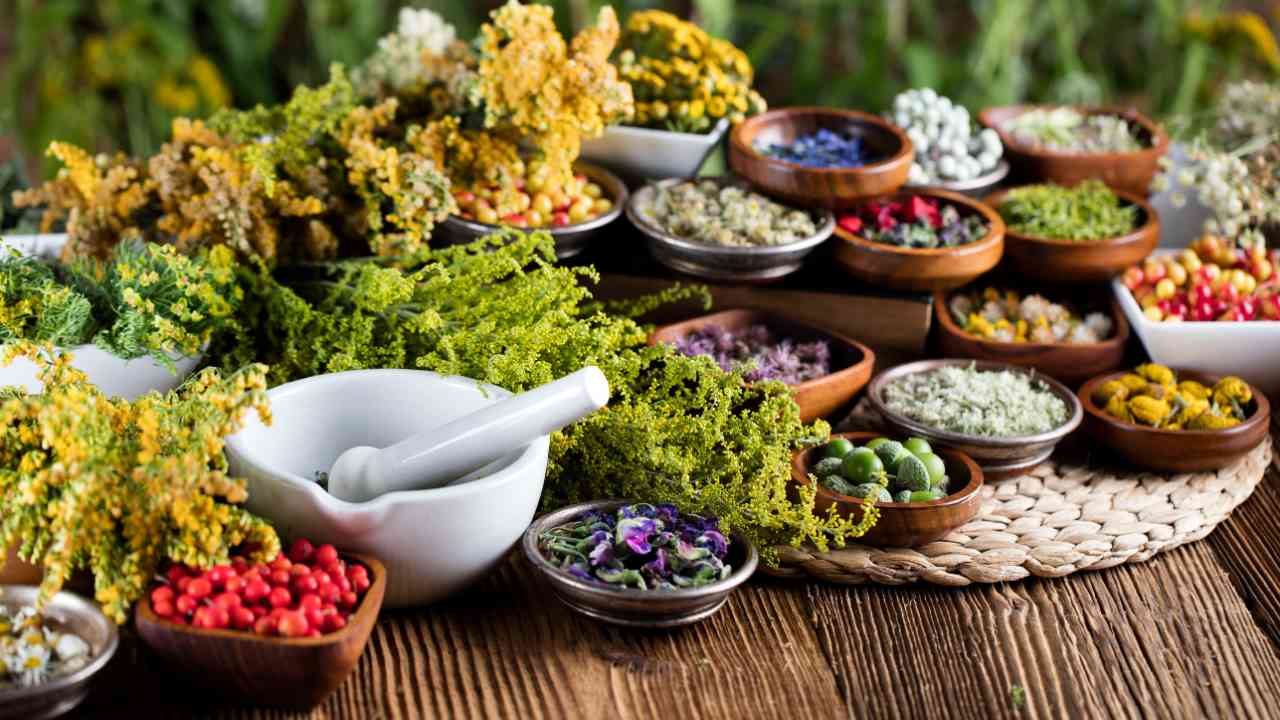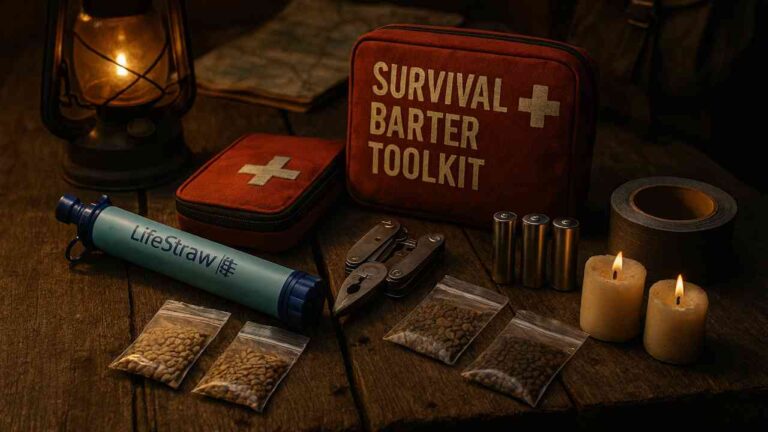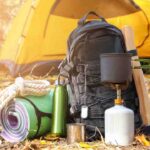Key Takeaways
- Foraging for medicinal plants can provide emergency medicine when pharmacies are closed.
- Top 5 backyard remedies: Plantain, dandelion, yarrow, chickweed, and elderberry.
- Always identify plants correctly—some look-alikes are deadly.
- Preserve herbs by drying, tincturing, or freezing.
- Follow safety rules to avoid poisoning or allergies.
Introduction
Did you know your backyard could be a hidden medicine cabinet? In an emergency, pharmacies may be inaccessible, but nature provides powerful remedies right outside your door. Foraging for medicinal plants is a vital survival skill that can help treat wounds, infections, and common ailments when modern medicine isn’t an option.
In this expert guide, we’ll reveal the top 5 backyard medicinal plants, how to identify them, their uses, and safety tips. Whether you’re a prepper, homesteader, or just curious about natural remedies, this knowledge could save your life.
Why Foraging for Medicinal Plants Matters in Survival Situations
Modern healthcare is convenient, but disasters—like power outages, supply shortages, or natural calamities—can cut off access to medicine. Foraging for medicinal plants ensures you have a backup when:
- Pharmacies are closed – When disaster strikes and medical facilities shut down, nature’s remedies become your only available treatment option.
- Antibiotics are unavailable – During prolonged emergencies, pharmaceutical antibiotics may run out while many plants offer natural infection-fighting properties.
- Minor injuries need fast treatment – Cuts, burns, and sprains require immediate attention that foraging can provide when medical help is delayed.
Historically, Native Americans and early settlers relied on wild plants for healing. Today, even the World Health Organization (WHO) recognizes herbal medicine’s role in primary healthcare (WHO, 2023).
Top 5 Backyard Medicinal Plants + How to Use Them Safely
1. Plantain (Plantago major)
Where You’ll Find It: Look for these broad-leafed plants growing like weeds in your lawn, along sidewalks, or in disturbed soil. They’re the ones with parallel veins running through oval leaves.
Why It’s Amazing:This humble plant works wonders for:
- Stopping bleeding fast (even nosebleeds!)
- Cooling burns and sunburns
- Taking the itch out of bug bites
How To Use It Right Now:
- Emergency bandage: Chew a clean leaf briefly and press it on cuts
- Bug bite relief: Rub the juice from crushed leaves on stings
- Sunburn soother: Make a strong tea, chill it, and dab on skin
“Keep plantain in your back pocket – literally. A crushed leaf in your wallet makes perfect emergency medicine.” – Herbalist Rosemary Gladstar
Watch Out For: Rare allergies (test a tiny amount first), Always pick from clean areas, not roadside ditches
2. Dandelion (Taraxacum officinale)
Spotting It Is Easy: Those bright yellow flowers you’ve been pulling as weeds? That’s free medicine! They grow everywhere – yards, meadows, even cracks in pavement.
Health Superpowers: Cleanses your liver better than fancy detox teas, Helps tummy troubles after meals, Packed with more vitamin A than carrots
Simple Ways To Use It:
- Digestive aid: Steep dried roots in hot water for 20 minutes
- Vitamin boost: Add young leaves to sandwiches instead of lettuce
- Skin toner: Use flower tea as a facial rinse
Safety First: Avoid if you’re allergic to ragweed. Never pick from sprayed lawns
3. Yarrow (Achillea millefolium)
Where It Grows Wild: Find its feathery leaves and white flower clusters in sunny fields, along country roads, and in dry soil areas.
Why It’s Special: Stops bleeding faster than store-bought styptic powder, Brings down fevers naturally, Fights infection in minor wounds
Practical Uses Today:
- Cut treatment: Sprinkle dried, powdered leaves on small wounds
- Fever reducer: Sip warm flower tea with honey
- Camping essential: Carry dried yarrow in first-aid kits
“Ancient warriors carried yarrow into battle – now it belongs in every modern medicine cabinet too.”
Explore Survival Gardening – 10 Essential Crops….
4. Chickweed (Stellaria media)
Finding This Helper: Look for small, star-shaped white flowers in garden beds and moist soil areas. It grows in lush green mats.
Healing Gifts: Calms angry rashes and eczema, Soothes minor burns, Reduces swelling from sprains
Easy Applications:
- Itch relief: Make a salve by steeping in olive oil for 2 weeks
- Cooling compress: Apply crushed leaves to sunburn
- Healthy greens: Mix young leaves into spring salads
5. Elderberry (Sambucus nigra)
Where To Look: Grows as bushes with clusters of tiny white flowers (later dark berries) near forests, streams, and in rural hedgerows.
Proven Benefits: Cuts flu duration nearly in half, Boosts immunity during cold season, Reduces fever naturally
Delicious Ways To Use It:
- Immune syrup: Simmer berries with honey and cinnamon
- Flower fritters: Dip fresh blooms in batter and fry lightly
- Sore throat tea: Brew dried flowers with mint
“Science confirms what grandma knew – elderberry syrup really does fight flu!” – NIH Research
Quick Reference Table: Your Pharmacy
| Plant | Best For | How To Use | Caution |
| Plantain | Cuts, burns, bites | Crush leaves as poultice | Test for allergies |
| Dandelion | Liver health, digestion | Root tea/leaf salads | Avoid sprayed areas |
| Yarrow | Wounds, fevers | Powder for cuts/tea for fever | Don’t use long-term |
| Chickweed | Skin irritation | Salve or fresh compress | Ensure proper ID |
| Elderberry | Colds/flu | Syrup or flower tea | Never eat raw berries |
Foraging Safety: 5 Must-Follow Rules
Before foraging for medicinal plants, remember:
- Always Identify Plants with 100% Certainty: Never eat or use any plant unless you’ve checked three reliable sources that confirm its identity beyond doubt.
- Stay Away from Contaminated Harvest Areas: Avoid picking plants near busy roads, industrial areas, or lawns that might have chemical treatments or pollution.
- Test Every New Plant for Allergies First: Rub a tiny portion on your inner arm and wait 24 hours before trying any internal use.
- Practice Sustainable Harvesting Techniques: Take only one-third of what you find, leaving enough for wildlife and future plant regeneration.
- Get Expert Advice When Unsure: Contact local herbalists or foraging groups before using unfamiliar plants – their knowledge prevents dangerous mistakes.
How to Preserve Foraged Medicinal Plants
- Drying Herbs Properly: Hang small bundles of clean herbs upside down in a well-ventilated, dark area like a closet or pantry for 1-3 weeks until completely crisp. Spread leaves evenly in a dehydrator set at 95°F (35°C) for 4-12 hours, checking frequently to prevent over-drying and nutrient loss.
- Creating Powerful Tinctures: Pack clean glass jars with fresh herbs, then cover completely with 80-100 proof vodka or rum, ensuring all plant material stays submerged for 4-6 weeks.
- Freezing for Freshness: Chop tender leaves like plantain or chickweed, mix with a little water, then freeze in ice cube trays for ready-to-use portions in teas or poultices.
- Bonus Method: Making Herbal Oil Infusions: Fill a jar ¾ full with dried herbs, cover with olive oil, and let sit in a sunny window for 2-4 weeks, shaking daily for potent medicinal oils.
Final Thoughts about Foraging for Medicinal Plants
Foraging for medicinal plants is more than just a survival skill—it’s a powerful way to reclaim your connection with nature’s wisdom. In times of crisis, when pharmacies may be inaccessible or supplies run low, the plants growing right outside your door can become your most trusted allies. From plantain’s wound-healing magic to elderberry’s immune-boosting strength, these backyard remedies have been used for centuries—and modern research now confirms their value.
But this knowledge isn’t just for emergencies. Learning to identify, harvest, and use these plants safely—whether drying herbs for tea, crafting tinctures, or freezing them for future use—empowers you to take control of your health naturally. It’s a return to the old ways, where every weed had a purpose and every backyard was a pharmacy.
So step outside, look closer, and let nature be your guide. With these five powerful plants, you’re not just preparing for the unexpected—you’re rediscovering a forgotten lifeline that grows, quietly and resiliently, all around us. Stay curious, stay safe, and let the earth heal you.
Sources Used
- World Health Organization (WHO) – Traditional Medicine Report
- National Institutes of Health (NIH) – Elderberry Study
- Rosemary Gladstar’s Medicinal Herbs: A Beginner’s Guide







